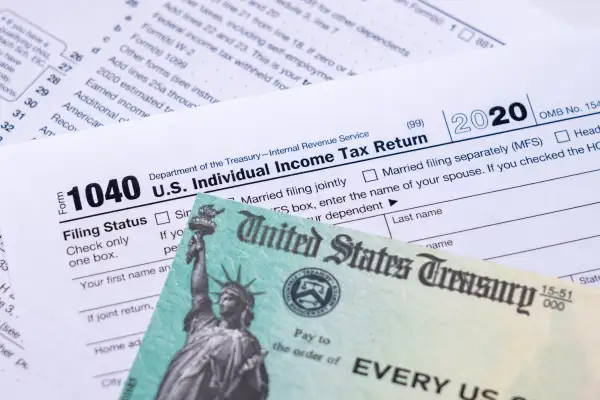How to Track Your Tax Refund and Any Stimulus Checks You're Owed From 2020

UPDATE: This article was first published in April 2021. In March 2024, the IRS announced that a deadline for claiming the first stimulus check (worth up to $1,200 per person) is coming up on May 17.
The federal filing deadline for 2021 isn't until May 17, but diligent Americans have already submitted some 85 million tax returns — many, in hopes of receiving a big refund from the government.
According to the latest filing statistics, the IRS has processed 57 million tax refunds so far this season, giving people back nearly $164 billion. The average refund shakes out to $2,902.
Though taxpayers are always anxious to get their refunds, the wait may feel particularly brutal this year. That's because the IRS is adjusting refunds for the 2020 tax year to account for missing coronavirus stimulus check funds. If your first and/or second Economic Impact Payment was incorrect, you can claim the Recovery Rebate Credit on your return. The IRS will either tack the funds it owes you onto your refund or reduce your tax bill by that amount.
Tax refunds are generally issued within 21 days, so once you've sent in your taxes you just have to be patient. But if you're feeling antsy, there are a few steps you can take to figure out the status of your tax refund.
How to track tax refunds
The IRS has a "Where's My Refund" tool on its website and mobile app, IRS2Go. You can use it starting 24 hours after you e-file your return. If you file a paper return, you'll have to wait four weeks (and possibly longer, given how backed up the IRS is right now) before you can check the status of your refund.
To track your refund, you'll need to know your Social Security number or Individual Taxpayer Identification Number, your filing status and the amount you're expecting. The tool should return one of three statuses: "return received," "refund approved" or "refund sent." The information typically refreshes every night.
Where's my my refund and why is it taking so long?
Your refund could be delayed if your return contains errors, if it's not complete, if you incorrectly calculated the Recovery Rebate Credit or if there's a fraud issue. Your refund may also get caught up in processing at your bank, depending on its weekend and holiday schedules.
Looking to speed things up? IRS Commissioner Chuck Rettig said in a news release that "filing electronically with direct deposit is the quickest way to get refunds, and it can help some taxpayers more quickly receive any remaining stimulus payments they may be entitled to."
If it's been more than three weeks since you e-filed your 2020 tax return and you still haven't received anything, or if the "Where's My Refund" tool tells you to contact the IRS, you can call 800-829-1040. The phone lines are open Monday through Friday, 7 a.m. to 7 p.m. local time. (FYI, the IRS phone number for stimulus check questions is different: 800-919-9835.)
The third stimulus check and your tax refund
Your 2020 tax refund may include funds from the first and second rounds of direct aid, passed by Congress last spring and in late December, respectively. You may remember these as the $1,200 and $600 payments.
But it won't have any stimulus money from the third, most recent round of stimulus checks. That's because those payments — in the amount of $1,400 per person — are an advance on a tax credit associated with the 2021 tax year. So if your third stimulus check amount was wrong, you'll have to wait until the IRS does its additional payment determination or plan to claim the Recovery Rebate Credit on your taxes next year.
To make matter more confusing, if you received unemployment benefits in 2020, you may see additional changes to your refund in the coming months.
Is it good or bad to get a big tax refund?
The mechanics of getting a refund have to do with how much you withhold from each paycheck to cover your individual income taxes. If you withhold too much, you get money back. If you don't withhold enough, then you end up having to pay come tax time.
Over-withholding is equivalent to giving the U.S. government an interest-free loan, but you may prefer to get a large check every spring. Which approach is best depends on the person, says Lisa Greene-Lewis, a certified public accountant and tax expert at TurboTax.
"Some people really look forward to the refund moment," she adds. "If they have that money in their paychecks, they may spend it when it's divided up over the year. But when they get a lump sum of refund, a lot of people use that to pay down debt or pay bills and [buy] necessities."
Do what works for you, use these tips and spend your refund wisely.
More from Money:
Answers to All Your 2021 Tax Questions, From Stimulus Checks to New Deductions
How to File Your Taxes for Free in 2021
I Was Almost Duped by This $40 TurboTax Fee. Here's How to Avoid It

